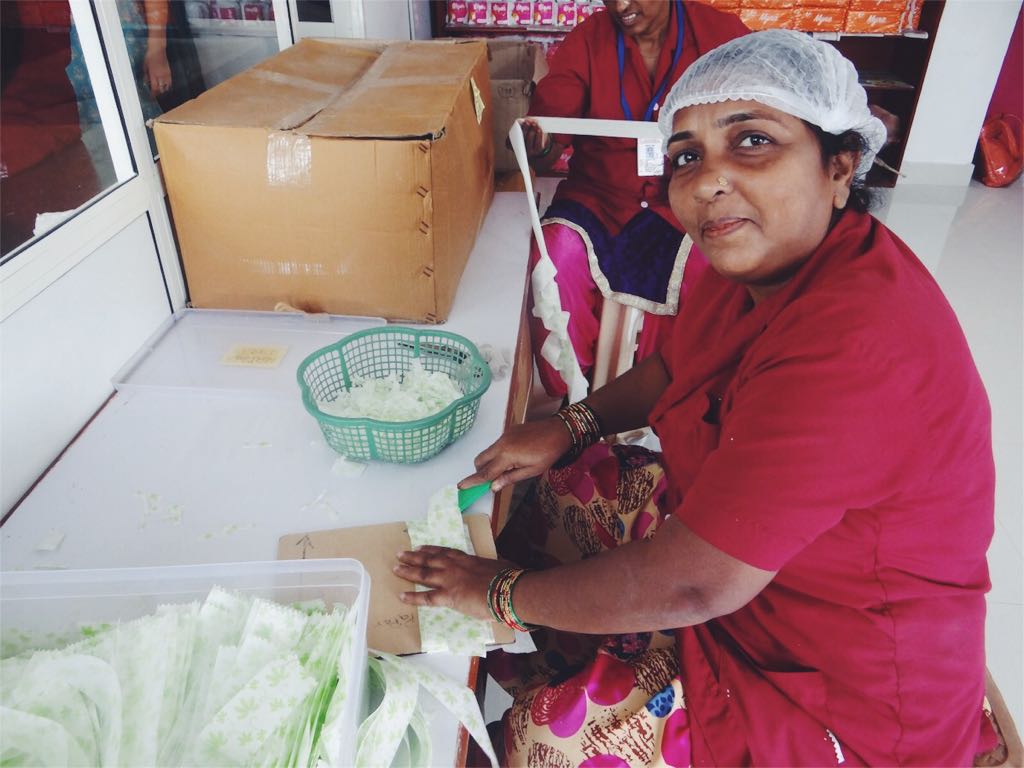When musician Kiran Gandhi ran the 2015 London Marathon on the first day of her period without a tampon or a pad — “free bleeding,” as many referred to it — she started a global conversation. “A marathon in itself is a centuries old symbolic act,” she later wrote for the Independent. “Why not use it as a means to draw light to my sisters who don’t have access to tampons and, despite cramping and pain, hide it away like it doesn’t exist?”
Undeniably, the greatest barriers faced by menstruating people are found in the developing world. Many girls simply aren’t prepared for menstruation and don’t know how to manage their hygiene. Another issue is being able to afford menstrual hygiene products. Hundreds of millions of women and girls worldwide don’t have access to clean water to wash reusable menstrual supplies. And in some places, there’s misunderstanding around what menstruation is, which creates an environment of shame.
“What to us is just a simple fact of life every month is monumental for an adolescent girl in the developing world,” says Jenn Donville, senior gender-equality adviser at Plan International Canada. That hurdle means missed opportunities: 20 percent of girls in rural India, for example, leave school after they get their first period. One estimate suggests one in 10 African girls misses school during her period.
But growing awareness is fuelling innovative solutions. Donville points to an initiative in Uganda in which adolescents at a local youth club are making reusable pads. “They are making a bit of money off the work that they are doing, and, in that moment, they’re also fighting stigma,” she says.
From a development standpoint, menstrual hygiene management (MHM) has become a priority. Donville says most NGOs that work with adolescent girls now integrate MHM into their programming. For example, WASH United (the acronym stands for water, sanitation and hygiene) has joined forces with more than 340 organizations around the world to educate both boys and girls — and in many cases parents and teachers — about menstrual hygiene in order to reduce stigma and misinformation.
Even former U.S. first lady Michelle Obama and Meghan Markle, the Duchess of Sussex, have spoken out about the stigma surrounding menstruation in the developing world in an effort to spur change. Markle chose India’s Myna Mahila Foundation as a recipient of contributions in lieu of wedding gifts when she married Prince Harry. The Royals’ website says the foundation’s mandate is to “break taboos around menstrual hygiene by offering women access to low-cost sanitary pads and accurate information.”
And in India, a welder named Aruna-chalam Muruganantham became a legend known as Pad Manby creating a machine that allows women to make and sell inexpensive sanitary napkins. More than 600 machines have been distributed in communities across the country, creating employment and making products much more accessible.
Each of these efforts is a small step toward eliminating what Donville says are the three factors that hold back menstruating girls: education, poverty and stigma. “Every single girl around the world has the right to be mobile, to participate in community decision-making [and] to access, complete and succeed at school,” she says. “There are not a lot of things that we share universally, women and girls, but [menstruation] is one of them. . . . It’s one way that we can relate, to a certain degree, with our sisters around the world.”
This story originally appeared in the October 2018 issue with the title “Period poverty around the world.”















